#battle for Crete
Text

One of the aircraft that had towed a German glider is shot down during the Battle for Crete - June 1941
#world war two#ww2#worldwar2photos#history#1940s#ww2 history#wwii#world war 2#ww2history#wwii era#Crete#Greece#glider#battle for Crete#1941
88 notes
·
View notes
Text





Embarquement des parachutistes allemands de la 7e Division aérienne (1ère division parachutiste en 1943) pour l'Opération Mercury - Bataille de Crète - Campagne de la Méditerranée - 20 mai 1941
#WWII#campagne de la méditerranée#campaign of the mediterranean#bataille de crète#battle of crete#luftwaffe#7e Division aérienne#7th Air Division#1ère Division parachutiste#1st Parachute Division#parachutistes#paratroopers#fallschirmjäger#crète#crete#20/05/1941#05/1941#1941
61 notes
·
View notes
Photo
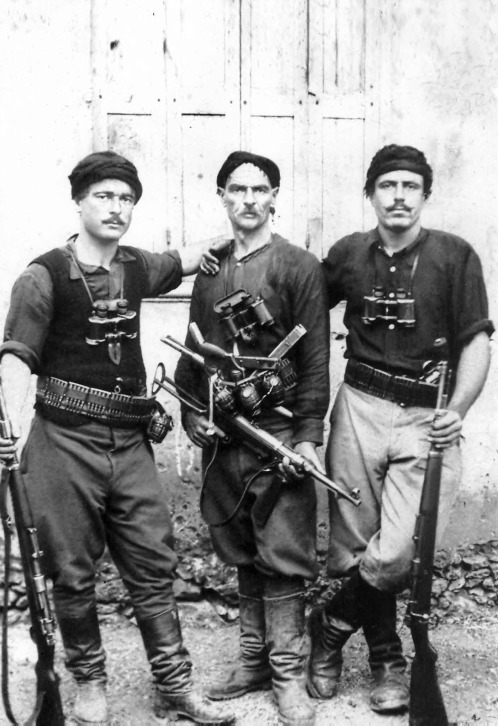
Greek anti-fascist partisans, Crete. 1941
89 notes
·
View notes
Text
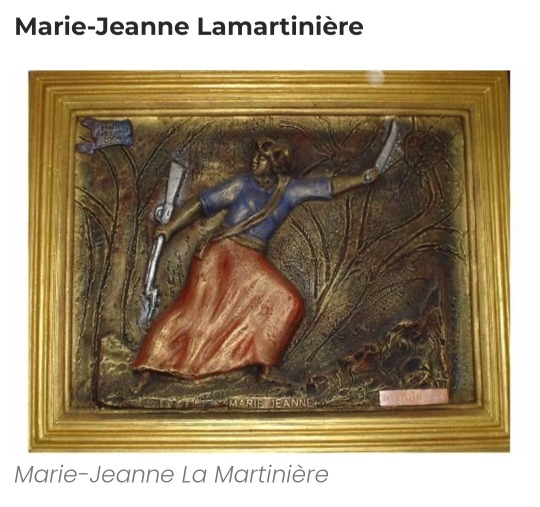
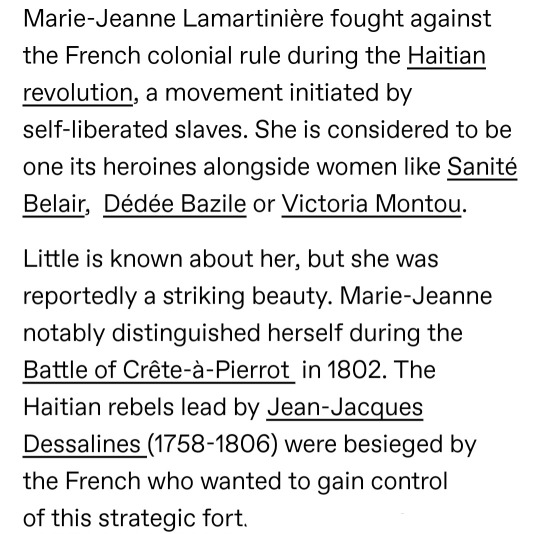
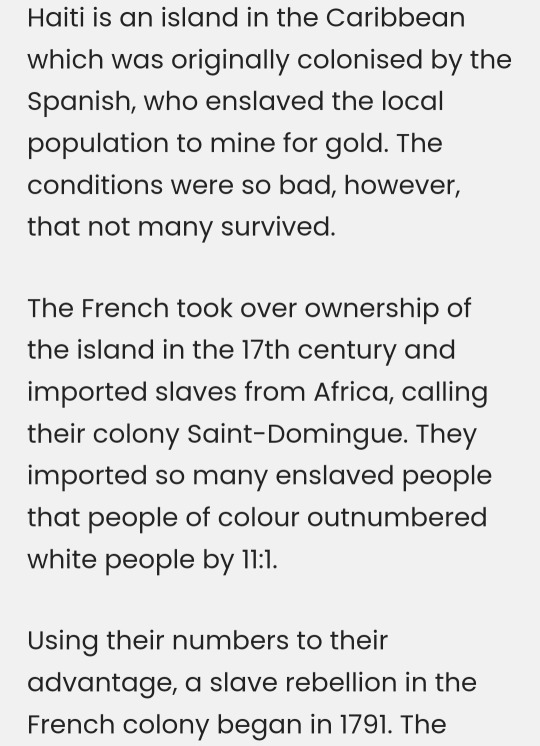
rebels were lead by Toussaint L'Ouverture, a self-freed Haitian general. It impacted the island on a large

3 notes
·
View notes
Text
1941 – Battle of Crete
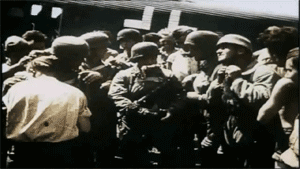
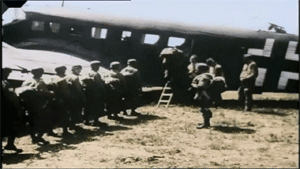







It began on the morning of 20 May 1941, with multiple German airborne landings on Crete. gif thebeautyandthehorror


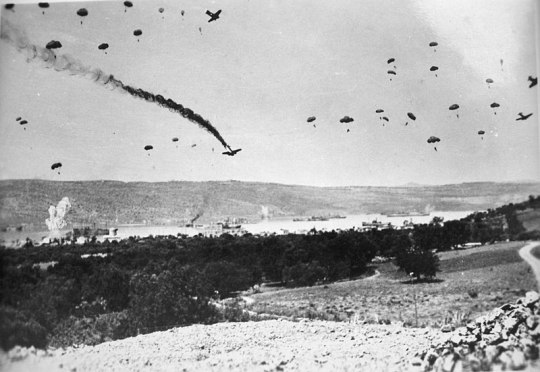

The Battle of Crete (German: Luftlandeschlacht um Kreta, Greek: Μάχη της Κρήτης), codenamed Operation Mercury (German: Unternehmen Merkur), was a major Axis airborne and amphibious operation during World War II to capture the island of Crete.



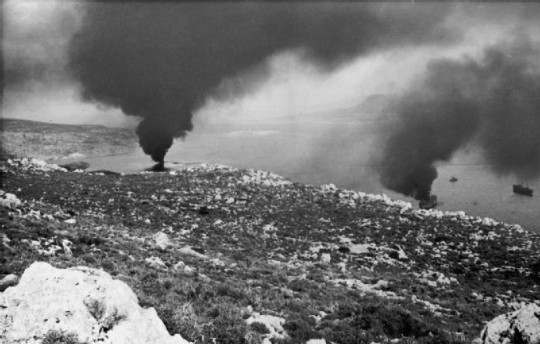

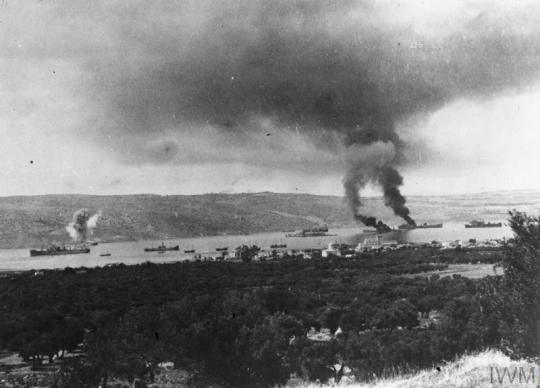
”Crete was the death of the airborne force” by Kurt Student.
1 note
·
View note
Text
Remember the Battle of Crete: May 1941.
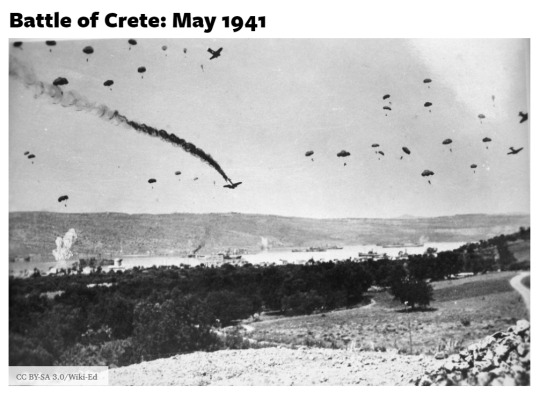
One of the most audacious operations in the German conquest of Europe was the air assault on the Greek island of Crete, the first action in which paratroopers were dropped in large numbers. Crete was defended by British and Greek forces who had some success against the lightly armed German soldiers jumping out of the sky.
However, delays and communication failures between Allies allowed the Germans to capture the vital airfield at Maleme and fly in reinforcements. Once the Nazis gained air superiority, landings by sea followed.
The Allies surrendered after two weeks of fighting.
[Read Up: Why the Tuskegee Airmen Were So Badass]
#Battle of Crete#chronology#second world war#military soldiers#german army#German soldiers#airfield#air assaults#German conquest of Europe#Year 1941
0 notes
Text

Of course, we already have an established image of Pyrrha in Ever after, but I wanted to make my own version of the armor for her.
And yes, I took Malenia's helmet, but the armor itself was inspired by Ornstein from Dark souls.
And since she no longer has a Spartan motif, she is now a Bronze Guardian, which is a reference to Talos - a bronze automaton that guarded the island of Crete, which had a weakness in the form of a nail in the ankle.
And as for the story of this Pyrrha, during the battle on the Bacon tower, Jaune flew in on a locker there and managed to detain Cinder long enough for Ruby to arrive, but unfortunately Jaune himself did not survive.
After Pyrrha goes through her journey with NPR and RWBY, but in the Atlas Pyrrha manages to detain Cinder and Neo on the bridge and transfer the relics to the Vacuum, and she falls into Everafter and plucks the clock fruit, after which she meets Jaune from the original timeline.
The idea of time lines that fit on top of each other in Everafter was taken from the same Dark souls, where, as in Everafter, time twists into a spiral, which is why the same events can intertwine into a knot, and people from different eras are able to meet.
228 notes
·
View notes
Text

All right folks, Argonautica is a go! woohoo!
I wanted to start with a map just so i could wrap my head around the journey and get familiar with the major locations and events in chronological order. I'll do another image showing the major heroes, and then we can dive into individual scene/event illustrations. Ill probably do around 12 -14 images for this myth, so I'll have to be picky about which scenes i illustrate.
Argonautica 1: Overview and Map Route
I.) Iolcis; The crew departs from Jason’s hometown.
II.) Lemnos; the island tribe of women who murdered their husbands.
III.) Doliones battle: a mistaken battle results in the death of King Cyzicus
IV.) Chios: Hylas abducted by water nymph, Heracles left behind
V.) Phineus, a blind seer, is rescued by the Argonauts from Harpies.
VI.) The Symplegades (Clashing rocks) a treacherous passage.
VII.) Stymphalian birds: the heroes drive away the man -eating birds
VIII.) Colchis; Jason overcomes three trials of King Aeetes to obtain Golden Fleece with the assistance of the sorceress Medea.
IX.) Brygean Islands: Medea and Jason trick and murder her brother Apsyrtus to escape Colchian pursuit.
X.) Circes Island; The goddess purifies Jason and Medea of blood-guilt.
XI.) The Sirens; Orpheus drowns out the sirens calls with his own song.
XII.) Scylla and Charybdis; Thetis and Nereids guide Argo through
XIII.) Drepane Island: escaping 2nd Colchian fleet, Jason and Medea wed.
XIV.) Syrtes: three Nymphs instruct crew to carry Argo on their backs for 12 days
XV.) Garden of the Hesperides;
XVI.) Lake Triton: Triton, Son of Poseidon, instructs crew on passage to sea
XVII.) Crete: Medea uses her magic to defeat Talos, a giant bronze warrior
XVIII.) Aegina Island: the journey ove r, they perform rites for Apollo
Do you like this art? would you like to own a book jam packed with over 130 illustrations like this? Then please support my kickstarter for my book "lockett Illustrated: Greek Gods and Heroes" coming in OCTOBER.
click on my LINKTREE for the Kickstarter link to "notify me when the project goes live." In my linktree is also a link to join my free email newsletter for book updates in the coming months, with free Hi res art and a 25% etsy print shop discount!
#pagan#hellenism#greek mythology#tagamemnon#mythology tag#percyjackson#dark academia#greek#greekmyths#classical literature#percy jackon and the olympians#pjo#homer#iliad#classics#mythologyart#art#artists on tumblr#odyssey#literature#ancientworld#ancienthistory#ancient civilizations#ancientgreece#olympians#greekgods#zeus#hesiod
429 notes
·
View notes
Text
Low energy Devotional Acts for when you don’t have a lot of energy (or time, or money, etc.) pt. 1
⚡️Zeus⚡️
-listen to storm or rain soundscapes
-watch the weather or check the weather on your phone or in the newspaper
-watch storm chasing videos
-watch documentaries or videos about various monarchies and/or kings
-watch videos about Crete! His mother hid Him there in a cave to keep Him safe from his father! And there’s all sorts of travel videos and such about it! If military history is your thing you could also learn about the Battle of Crete which took place in ww2!
-listen to devotional playlists for Him I have one up on Spotify but I know there’s some others there as well!
-cloud gaze
-watch nature docs about any of His sacred animals! The eagle, bulls, etc.
⚔️Ares⚔️
-watch war movies or war related shows (my favorite is Band of Brothers which I have on dvd)
-watch war related documentaries
-watch combat sports like boxing, wrestling, etc.
-do a Wikipedia rabbit hole search about various weapons and/or combat styles from any era or a YouTube deep dive whichever works for you
-if able find and attend a reenactment my town does a little civil war thing a few times a year that I occasionally go to you learn about what life as a soldier was like and what training was like and all that it’s very interesting
-watch a video about Thebes! Ares is said to have played a role in its founding!
-learn about birds of prey!
-listen to a devotional playlist for Him
-adding to this with: listening to video game soundtracks from fighting/combat games, or listening to war soundscapes
#low energy low effort devotional acts#cause we all have those times where we just need something simple#hellenic polytheism#helpol#hellenic pagan#hellenic pantheon#hellenic paganism#zeus deity#zeus worship#zeus devotee#hellenic gods#ares deity#ares worship#ares devotee#save for the reenactment and maybe cloud gazing everything here can be done in bed#I like the silly little reenactment though it’s free and small and like just down the street from where I live which is why to me it’s#a low energy sort of thing
380 notes
·
View notes
Text
Why Mycroft Canner is crying (and is the most sopping wet cat character of all time)
In the book 'The Will to Battle' Mycroft spends half the book crying so in order to recover from my insane Book Hangover I decided to write a list of all the reasons Mycroft is crying in this book (some of them are even valid!!)
If you haven't read Ada Palmer's 'Terra Ignotia' series, this list contains extremely out of context and vague spoilers and not a lot of plot information so give it a read and see if he's a character you'll like (and then read the series and go insane with me)
Chapter 2
Someone said they trust him
He's not exactly crying but he is sitting on a bench, hugging his knees and trying to ignore his hallucinations while people are debating the future of the human race (pure wet cat behaviour)
Chapter 3
He saw the Mediterranean sea
Now he's in Crete and the sea smells salty
He was told he couldn't join a meeting (to be fair, he just did a bunch of traveling to get to the meeting)
Chapter 7
He saw a pretty boy
Recovers for a bit, has a whole ass conversation then starts crying again for the same reason (also because the pretty boy is looking all sad and vulnerable)
Someone was kind to the pretty boy (he at least tried to weep silently here)
He found out someone cares about him enough to try and track him (OK but this bit is crazy because Mycroft was just beat up, is bleeding, kidnapped, has a collar of knives around his throat, tied up, electrocuted, pushed to the ground and having a heart attack. He is totally fine with this. But then starts sobbing out of GRATITUDE because he found out someone kinda sorta cares about him!!!!?)
Ok NOW he's finally crying because he's scared (he described it as "strange" that he was crying and "tinged my eyes with salt". Good job Mycroft! Way to under-react to the situation)
Chapter 8 (still kidnapped and just been double-stabbed)
Someone threatened to kill a 17 year old boy who Mycroft believes is god
Someone asked where Bridger was (ok this bit is actually sad I started crying too)
Someone tried to start WWIII and Mycroft had a mini freak out
He saw an old building covered in graffiti
He got told off because he didn't try to kill his kidnappers (Mycroft actually tried to protect??? the original kidnappers - this is kind of a nesting doll kidnapping situation)
Chapter 11
A really old document got stolen
Caesar (his sort of president/sort of master) is wearing a new suit (its noted that he is sobbing for like 3 pages here)
Chapter 12
Pride, relief and grief (an odd mix but ok)
Chapter 13
He was hallucinating and (understandably) freaked out. Then started crying when someone asked if he was ok.
Chapter 14
Theres like a super intense argument happening between Caesar and god
Caesar put a really harsh punishment on some people who deserved it and Mycroft had a full on existential crisis because he believes he deserved it too (like he passed out and started sobbing because he deserves worse? than being a slave?)
Chapter 19
The scary space people decided to join a war (not crying because a giant lion is sitting on him, happy because at least its muting his sobs)
Chapter 21
He saw some fireworks
#ada palmer#too like the lightning#Will to battle#Mycroft Canner#sopping wet cat behaviour#terra ignota
55 notes
·
View notes
Text
‘Pimpernel of the Hellenes’, ‘Major Paddy’, ‘Enchanted maniac’: Will the real Paddy Leigh Fermor please stand up?
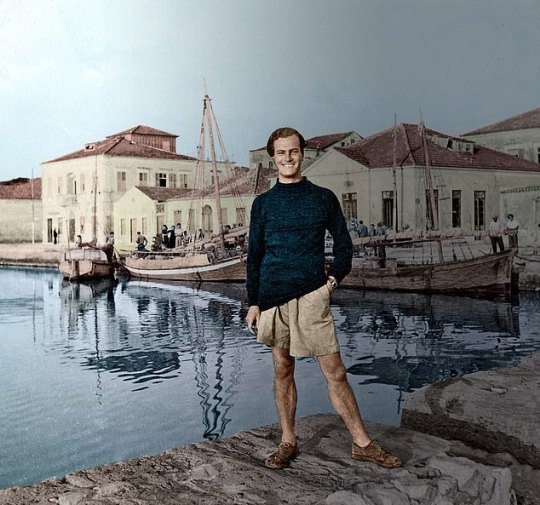
Paradox reconciles all contradictions.
- Patrick Leigh Fermor
So one evening I was baby sitting my nephews and nieces here in our family chalet in Verbier, high up in the Swiss Alps. It was my turn to baby sit as the rest of my family enjoyed the fantastic classical music concerts and events showcased at the two week long Verbier 30th Festival. The little scamps had gone to bed and my father and I watched an old British war movie on DVD, ‘Ill Met By Moonlight’ (1957). It was filmed by the legendary team of Michael Powell and Emeric Pressburger based on the 1950 book ‘Ill Met by Moonlight: The Abduction of General Kreipe’ by W. Stanley Moss.
I’ve seen the film a couple of times before, but until now never really paid attention to where the title came from. My father said it was from Shakespeare’s ‘A Midsummer’s Night’s Dream’ And so it was. In the play, Oberon, the king of the fairies and the Queen are having a fairly bitter drawn-out fight over custody of a changeling Indian child, and this is how the pissed off king greets the queen when they run into each other, “Ill met by moonlight, proud Titania”. Oberon is basically saying "Oh Lord, it's you..." and Titania's response is basically a flippant middle finger. One of the best modern reasons to read Shakespeare: to throw playful erudite shade at others.
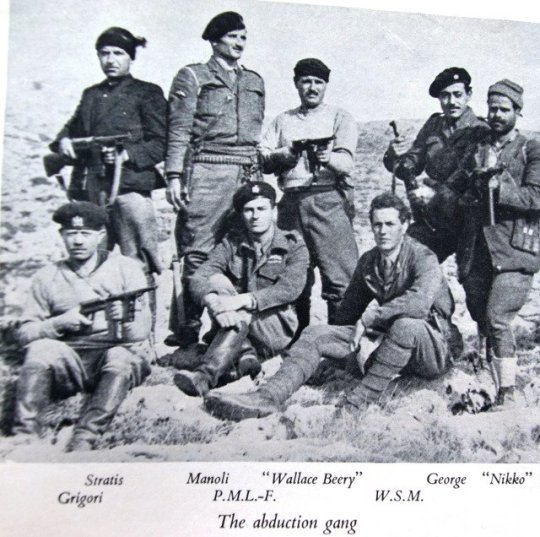
Anyway, the historical background of the film is the German invasion of Crete in May 1941. After an intense ten-day battle, Allied troops were driven back across the island, and many were evacuated from beaches along the southern coast. Some Cretans and British officers took to the mountains to organise resistance against the occupying forces. The German occupation that followed was especially brutal. Dreadful reprisals followed every act of resistance. The German commander, General Müller, insisted on taking 50 Cretan lives for every German soldier killed; he became known as ‘The Butcher of Crete’.
As a Classicist side note, there had been a close association between Britain and Crete since the early 20th century, when archaeologist Sir Arthur Evans had uncovered the sensational remains of a Minoan palace at Knossos. The headquarters of the British archaeological school in Crete was a large villa alongside the site, known as Villa Ariadne. Several archaeologists, who knew the island and its people well, went underground after the German occupation to aid the Cretan resistance. Continuing in this tradition, scholar and travel-writer Patrick Leigh Fermor, who had got to know Greece in the 1930s, joined the Special Operations Executive (SOE).
During the German occupation, Major Paddy Leigh Fermor travelled to Crete three times to help organise local resistance against the hated German occupation. On the third occasion, in February 1944, he was parachuted in with a specific mission to kidnap German commander General Müller, to boost morale on Crete along with his erstwhile SOE comrade Capt. W. Stanley Moss MC (aka Billy Moss) of the Coldstream Guards. However, just after they parachute in, General Müller was replaced by General Heinrich Kreipe, who transferred from the Russian Front. Thinking that capturing one general was as good as another, Fermor merrily go ahead with the daring kidnap operation.
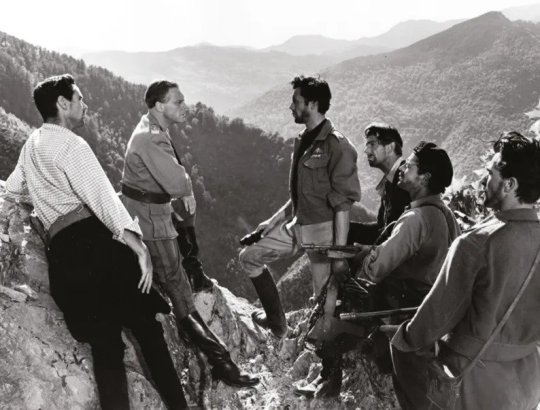
It’s at this point that the narrative of Michael Powell and Emeric Pressburger’s ‘Ill Met by Moonlight’ (1957) picks up. Dirk Bogarde plays Paddy Leigh Fermor, David Oxley plays Moss, and Marius Goring plays the taciturn German paratroop general. Blink and you’ll miss the late great Christopher Lee making a cameo appearance as a German officer in the dentist’s room scene.
The film naturally takes some liberty with the facts but it’s a cracking yarn of high adventure and drama. Xan Fielding, a close friend of Leigh Fermor from the SOE in Cairo, was taken on as technical adviser. The fact the film was shot in in the Alpes-Maritimes in France and Italy, and on the Côte d'Azur in France, far away from the craggy valleys and mountains of Crete itself. The director Michael Powell spent some time walking in Crete to get to know the island, but decided that, with the confused and volatile state of Greek politics, it was not suitable to film there.
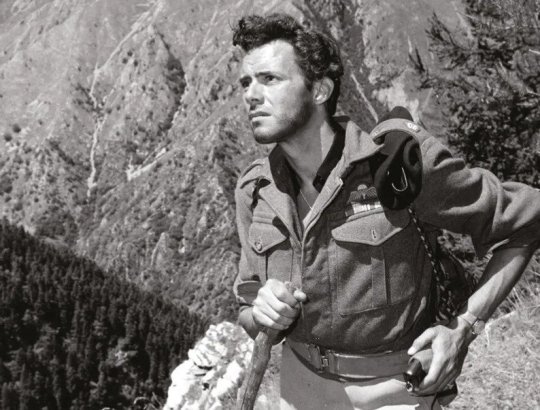
Looking back years after he had directed it Powell didn’t think much of his own film. By contrast, Paddy Leigh Fermor, who was on set throughout the film shoot, was very happy with Bogarde’s portrayal of him with Byronic glamour. Watching the movie again ‘Ill Met by Moonlight’ remains a classic and stands out from many British war films of the 1950s because of its realism. The British SOE men and the Cretan guerrillas look absolutely right for their parts. It is dramatic and full of suspense while filled with much boyish humour.
I was disappointed with one notable omission in the film that did happen in real life. According to Patrick Leigh Fermor, at dawn one day during the journey across the mountains, General Kreipe was looking at the mist rising from Mount Ida and began to recite, in Latin, the opening lines of Horace’s ninth ode:
Vides ut alta stet nive candidum
Soracte nec iam sustineant onus
silvae laborantes geluque
flumina constiterint acuto?
Behold yon Mountains hoary height,
Made higher with new Mounts of Snow;
Again behold the Winters weight
Oppress the lab’ring Woods below:
And Streams, with Icy fetters bound,
Benum’d and crampt to solid Ground
(John Dryden 1685)
Leigh Fermor picked up on the General, and recited the remaining stanzas of the Ode. ‘Ach so, Herr Major,’ said Kreipe when Leigh Fermor had finished. Both men were amazed to realise they shared a classical education and a love of ancient Latin poetry.
Leigh Fermor later wrote that it was as though the war had ceased to exist for a moment, as ‘We had both drunk from the same fountains before.’ It brought captor and captive together with a strange bond. The scene was not reproduced in the film, as Powell and Pressburger probably thought it would make the men sound too academic for a popular cinema audience.
Leigh Fermor and Kreipe met again in the early 1970s, on a Greek television show, and got on famously together. The General said Leigh Fermor had treated him chivalrously as a captive. They remained friends until Kreipe’s death.

After sharing a late night drink with my father after the film, I began to muse on the figure of Paddy Leigh Fermor, a family friend and someone I met along with his wife, Joan, as a little girl. My grandparents, and especially my grandmother, knew Paddy briefly from their days during and after the Second World War.
My father shared a few stories about him when he and my mother visited his beautiful home in Greece, where even at his advanced age he remained the most generous of hosts and the most outrageous flirt.
One of my memories was getting into his battered old Peugeot in the drive way and trying to drive it when my feet could barely touch the pedals. It wouldn’t have mattered in any case as the brakes didn’t work as he cheerfully said later as we careened around a dirt road to go around the mountains for a drive.
Many years later in April 2022, I tried to visit the home of the late Patrick and Joan Leigh Fermor - a sort of pristine shrine to their memory that one can also stay in any of the rooms as a vacation rental - in the coastal fishing village of Kadarmyli in the Peloponnese, as part of a hiking and mountaineering sojourn around Greece with ex-Army friends. We couldn’t stay there as it was already rented out to other guests, and so we stayed higher up the mountain in a villa, but we swam in front of the Fermor’s home which was on the water’s edge.
You could never put your finger on Paddy Leigh Fermor. He hid behind his gift for telling yarns, and pulling Ancient Greek verses out of the thin air, as well as boisterously singing local Greek songs with a drink in his hand.
Even after his death in 2011, the question keeps nagging as to who was Paddy Leigh Fermor?
The Dirk Bogarde film too seems to ask, who exactly is the ‘real’ Patrick Leigh Fermor - or the real anyone? Taking its title from a Shakespearian play concerned with dreams and disguises, magic and power, ‘Ill Met By Moonlight’ is all about questions of identity.
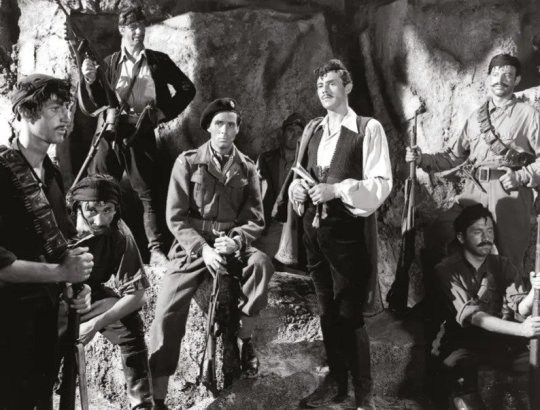
Under the film credits, we see Dirk Bogarde in uniform; then, unexpectedly, we see him in the flamboyant outfit of a Cretan hill-bandit. A title informs us that Major Leigh Fermor was also known by the Greek code-name “Philidem.” In other words, there are two of him (at least), and on one level the adventure the film is about to unfold reflects a conflict in his personality. It’s a conflict shared, unknowingly, by his Nazi opposite number, the fierce, arrogant General Kreipe (an unlikely “proud Titania,” but it’s true that he “with a monster is in love” – the monster of Nazism). Kreipe’s human side is so rigorously repressed by the demands of war and “glory” that he is genuinely unaware of it; ironically, this humanness, which constitutes the true manhood of this Teuton warrior, is revealed by a boy (equivalent to Shakespeare’s Indian Prince?) - who, in turn, is the most grown up person in the movie.
If “Philidem” appears under the credits, caped and open-shirted, a romantic dream-figure out of an operetta or a storybook, he is first seen in the film proper as a coarser, more down-to-earth version of the same thing – an ordinary Cretan peasant in a shabby suit, waiting for a bus. When he makes contact with the Resistance, his personality fragments further.
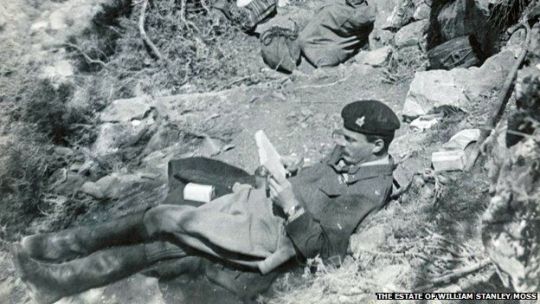
To some, he is the mystical Philidem, Pimpernel of the Hellenes and righter of wrongs. To others he is “Major Paddy,” the happy-go-lucky Englishman of popular movie myth conducting war as if it were a branch of amateur theatricals, a gentleman adventurer relying on breeding to get him through and making fun of the whole business. To Bill Moss (David Oxley), the newly arrived junior officer sent to assist him, he is the cool, fast-thinking professional soldier. And to himself? In his quietly passionate defence of Cretan life and culture, he seems someone else again: a scholar and aesthete outraged by the barbarism and folly of war, and by the moronic arrogance shown by his captive toward the Cretan people.
Whatever his persona, Leigh Fermor is a chameleon who never seems to change very radically in himself. Perhaps because he has this quality of seeming all things to all men – and being those things - he remains unfazed by the monolithic might of the German military machine. Fluent in Greek, he can also speak German like a German and is easily able to assume another disguise, that of a faceless Nazi officer. Although he and Moss make fun of themselves - “If only I had a monocle!” muses Moss when Leigh Fermor tells him he “looks like an Englishman dressed like a German, leaning against the Ritz bar” - they are able to effect the kidnapping with an ease that seems appropriately Puckish. General Kreipe is ignominiously thrust onto the floor of his own limousine, gagged, and sat upon by a couple of the peasants he so despises. Kreipe’s rage is compounded by his firm conviction that he has been snatched by “amateurs” - a belief Leigh Fermor and Moss slyly make no objection to, knowing how it will gnaw at his already shaky Master Race self-confidence.
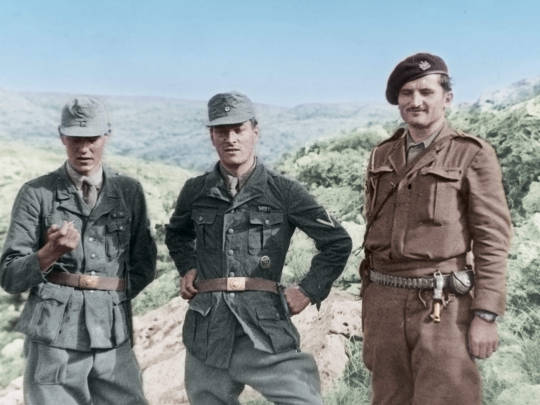
Patrick Leigh Fermor, aka Major Paddy, aka Philidem, in the film’s closing moments, is far from being self-assured intellectual or dashing amateur adventurer or legendary outlaw of the hills. He’s just a tired man who wants to go home and rest up. “How do you feel?” asks Moss. “Flat” is the reply. “You look flat!” says Moss. “I know how I’d like to look …” murmurs Leigh-Fermor wistfully. Moss knows what he’s going to say, and joins in the litany: “Like an Englishman dressed like an Englishman – and leaning against the Ritz bar!” It’s easy to imagine them ordering drinks at that renowned watering-hole with all the suavity required by this little fantasy.
Still, the film’s last images of Crete receding in the distance, until all we can see is the sea, suggests that maybe Major Paddy’s heart is really back in those hills in the “fair and fertile” land that has become as much a Powellian landscape of the mind for us as the studio-built Himalayan convent of ‘Black Narcissus’ or the monochrome Heaven of ‘A Matter of Life and Death’. And, as the film POV closing shots departs both Crete and this film, I began to think that being “dressed like an Englishman and leaning against the Ritz bar” would, for Patrick Leigh Fermor constitute yet another disguise. After all, he said he was of Irish aristocratic stock.
Traveller and writer Paddy Leigh Fermor is best known for two events. He’s known for leading the commando group in occupied Crete to kidnap General Kreipe. But he is also known for the boy who, at a mere 18 years old, set off with little money and a lot of nerve in 1933 to walk from the Hook of Holland to Constantinople.
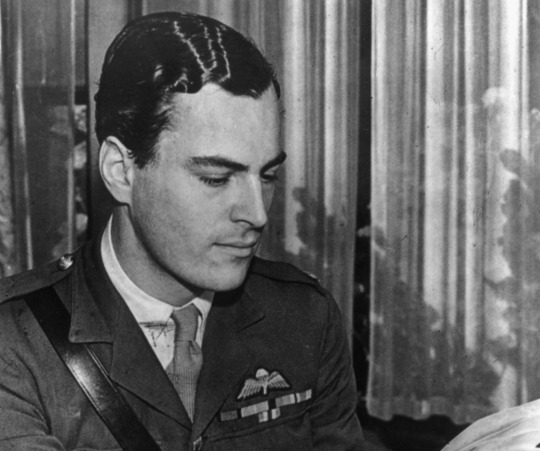
Patrick Leigh Fermor was, in the words of one of his obituaries, a cross between Indiana Jones, James Bond and Graham Greene. Self-reliance and derring-do were lessons learnt from the cradle. When Fermor’s geologist father was posted to India, he and his wife left the infant with family in Northamptonshire and did not return until his fourth birthday. In retrospect, he took great delight in being sent to a school for difficult children and getting himself expelled from the King’s School, Canterbury, when he was caught holding hands with a greengrocer’s daughter eight years his senior. His school report infamously judged him ‘a dangerous mix of sophistication and recklessness’.
Sharing a flat in Shepherd’s Market, one of Mayfair’s seedier corners, Leigh Fermor schooled himself in literature, history, Latin and Greek.
He honed his character with the company of extraordinary people and the words of great writers - he had a prodigious memory for prose as well as poetry. He befriended literary lions such as Sacheverell Sitwell, Evelyn Waugh and Nancy Mitford. His travels began aged ‘eighteen-and-three-quarters’ when he rejected Sandhurst Royal Military College in order to walk the length of Europe from Hook of Holland to Constantinople. He took with him Horace’s Odes and the Oxford Book of Verse though Leigh Fermor could recite Shakespeare soliloquies, Marlowe speeches, Keats’s Odes and as he modestly put it ‘the usual pieces of Tennyson, Browning and Coleridge’ from memory.
Leigh Fermor was then a self-made man in the most literal sense.

Setting off from England in 1933, Fermor resolved to traverse Europe living like a hermit; sleeping in bars and begging for food. But his manly charms and boyish good looks found him being passed like a favourite godson from Schloss to palace by European nobility and he developed a lifelong penchant for aristocratic company. I his own words, ‘In Hungary, I borrowed a horse, then plunged into Transylvania; from Romania on into Bulgaria’. Having reached Constantinople in January 1935, Fermor continued to explore Greece where he fought on the royalist side in Macedonia quelling a republican revolution. In Athens Leigh Fermor met Balasha Cantacuzene, a Romanian countess with whom he fell in love. They were living together in a Moldovan castle when World War Two was declared.
Fluent in Greek, Leigh Fermor was posted as a liaison officer in Albania. Recruited as a Special Operations Executive (SOE), he was shipped from Cairo to German-occupied Crete where he lived disguised as a shepherd in the mountains for two years. On his third expedition to Crete in 1944, Leigh Fermor was parachuted alone onto the island and made connections in the Cretan resistance movement. While waiting for his compatriot Captain Bill Stanley Moss to land by water from Cairo, Leigh Fermor hatched a plot to kidnap German Commander General Heinrich Krieple. He liaised comfortably with Cretan partisans and bandits to pull off one of the war’s greatest coups de théâtre.

Disguised as German soldiers, Leigh Fermor and Moss stopped Krieple’s car at an improvised check point en route back to Nazi HQ in Knossos. Abandoning the General’s car after a two-hour drive, Leigh Fermor left a note indicating that the kidnappers were British so that there wouldn’t be reprisals against Cretan nationals. When the abduction of the unpopular commander was discovered, a German officer in Heraklion allegedly said ‘well, gentlemen, I think this calls for champagne’. It turns out that General Kreipe was despised by his own soldiers because, amongst other things, he objected to the stopping of his own vehicle for checking in compliance with his commands concerning approved travel orders. It’s why for instance the German troops, both in the film and in real life, dare not stop the General’s car as it drove through the check points at Heraklion.
Krieple was evacuated and taken to Cairo and Leigh Fermor entered the annals of World War Two’s most devil-may-care heroes. With characteristic panache, when he was demobbed Leigh Fermor moved into an attic room at the Ritz paying half a guinea a night. But his first travel book, ‘The Traveller’s Tree’, was not about the European odyssey or the Cretan escapades and centred on Leigh Fermor’s adventures in the Carribbean. Published in 1950, ‘The Traveller’s Tree’ was an inspiration for Ian Fleming’s second James Bond novel ‘Live and Let Die’ (1954).
As a host and house guest, Paddy Leigh Fermor was much sought-after. At one of his parties in Cairo, he counted nine crowned heads. He was a confirmed two-gin-and-tonics before lunch man and smoked eighty to 100 cigarettes a day. His party pieces included singing ‘It’s a Long Way to Tipperary’ in Hindustani and reciting ‘The Walrus and the Carpenter’ backwards. In Cyprus while staying with Laurence Durrell, Leigh Fermor apparently stunned crowds in Bella Pais into silence by singing folk songs in perfect Cretan dialect. As Durrell wrote in ‘Bitter Lemons’ (1957), ‘it is as if they want to embrace Paddy wherever he goes’.
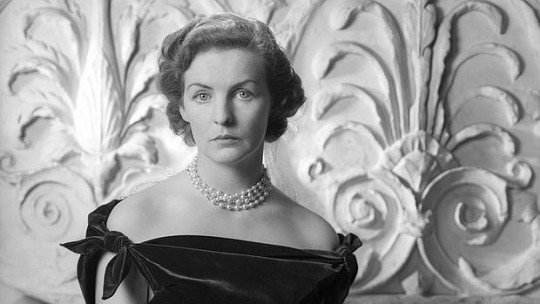
He struck up a partiuclar friendship with the famous Mitford sisters, especially Deborah Mitford, later ‘Debo’, the Duchess of Devonshire. It was at the Devonshires’ Irish estate Lismore Castle that ‘Darling Debo’ and ‘Darling Pad’ met and began to correspond. A characteristic letter from the Duchess in 1962 reads ‘The dear old President (JFK) phoned the other day. First question was ‘Who’ve you got with you, Paddy?” He’s got you on the brain’ to which Fermor replies of a broken wrist ‘Balinese dancing’s out, for a start; so, should I ever succeed to a throne, is holding an orb. The other drawbacks will surface with time’.
After the war he travelled widely but was always drawn back to Greece. He built a house on the Mani peninsula - which had been, significantly, the only part of Magna Graecia to resist Ottoman colonisation since the fall of Constantinople in 1453. Before his death in 2011 at the age of 96, he wrote some of the most acclaimed travel books of the 20th century.
His books contain some of the finest prose writing of the past century and disprove Wilde's maxim that "it is better to have a permanent income than to be fascinating".
Charm, self-taught knowledge and enthusiasm made up for the lack of a university degree or a private income. His teenage walk across Europe and subsequent romantic sojourn in Baleni, Romania, with Princess Balasha Cantacuzene are proof enough of that. But the difficulty of capturing such an unconventional and glamorous life is made harder by the certainty that Fermor was an unreliable narrator.

He was also an infuriatingly slow writer. Driven by a life-long passion for words yet hampered by anxiety about his abilities, Leigh Fermor published eight books over 41 years.
‘The Traveller's Tree’ describes his postwar journey through the Caribbean; ‘Mani‘ and ‘Roumeli’ (1958 and 1966) draw on his experiences in Greece, where he would live for much of the latter part of his life. But it is the books that came out of his trans-Europe walk that reveal both the brilliance and the flaws. ‘A Time of Gifts’ was published in 1977, 44 years after he set out on the journey. ‘Between the Woods and the Water’ appeared nine years later. Both describe a world of privilege and poverty, communism and the rising tide of Nazism, and end with the unequivocal words, "To be continued". Yet the third volume hung like an albatross around the author's neck. As the years passed, Fermor found it impossible to shape the last part of his story in the way he wanted.
Leigh Fermor was that rarest of men: a man determined to live on his own terms, if not his own means, and who mostly - and mostly magnificently - succeeded. Always popping off on a journey when he should have been writing about the last one, always ready to party, he was forever chasing beautiful, fascinating or powerful women, even when with his wife, Joan Raynor. She was the great facilitator who funded his passion for travel and writing, as well as women, from her trust fund. His love affairs were discreet but legendary.
Leigh Fermor was happiest among the rogues. Over a lifetime on the road, he sought them, and in turn they responded to his charm, nose for adventure, and his famous wit. He was a keenly-anticipated dinner guest - once outshining Richard Burton at a London society soirée, who he cut-off midway through a recital of ‘Hamlet’. As Richard Burton stormed out, the pleading society hostess said, “But Paddy’s a war hero!” to which Burton grouchily replied, “I don’t give a damn who he is!”
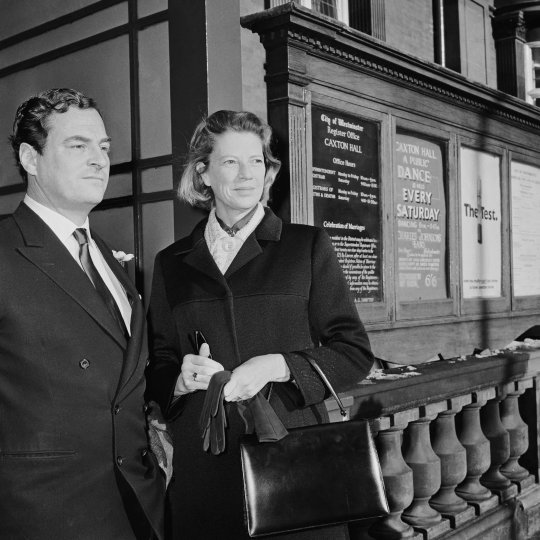
His partnership with and then marriage to Joan Raynor was an open relationship, at least on Leigh Fermor’s side. Paddy saw in Joan his kindred spirit. Like him, she spent much of her youth travelling to where she pleased; largely in France, where the photographer and literary critic Cyril Connolly became besotted by her. Joan was the daughter of Sir Bolton and Lady Eyres Monsell of Dumbleton Hall, Worcestershire. She was not only stunningly pretty but also 'a beautiful ideal, with the perfect bathing dress, the most lovely face, the most elaborate evening dress', as the Eton educated Connolly described her. Joan also stood out from the upper-class beauties of her day in that she supplemented her mean rich father's allowance by earning her living as a decent photographer.
In 1946, she met Leigh Fermor in Athens, while he was deputy director of the British Institute. Joan met him at a time when he was then in a relationship with a French woman called Denise, who was pregnant with his child, which she aborted. The pair would travel to the Caribbean together under the invitation of Greek photographer Costas, falling madly in love.

She was the only woman that - after decades of sexual scandals - matched his own erratic behaviour. Stories of how they dined fully-clothed in the Mediterranean, dragging a table into the sea, as well as their myriad cats and olive groves, paint a restless couple, who, when not out articulating the peoples of their adopted homeland, kept themselves very busy.
The attraction between Paddy and Joan was instant. So many love affairs that Paddy indulged in seemed about as brief as the flame from a burning envelope and you expected this one with Joan to be too. But somehow, miraculously, it lasts.
The two were apart a great deal, but in their case, absence did make the heart grow fonder. While Paddy was staying in a monastery in Normandy, supposed to be thinking monk-like thoughts that he would eventually put into his masterpiece A Time To Keep Silence, he was also writing sexy letters to Joan: 'At this distance you seem about as nearly perfect a human being as can be, my darling little wretch, so it's about time I was brought to my senses.' And: 'Don't run away with anyone or I'll come and cut your bloody throat.'
She tantalised him with descriptions of Cyril Connolly making passes at her; but she, like Denise, sounded a rather desperate note when she wrote: 'I got the curse so late this month I began to hope I was having a baby and that you would have to make it a legitimate little Fermor. All hopes ruined this morning.'
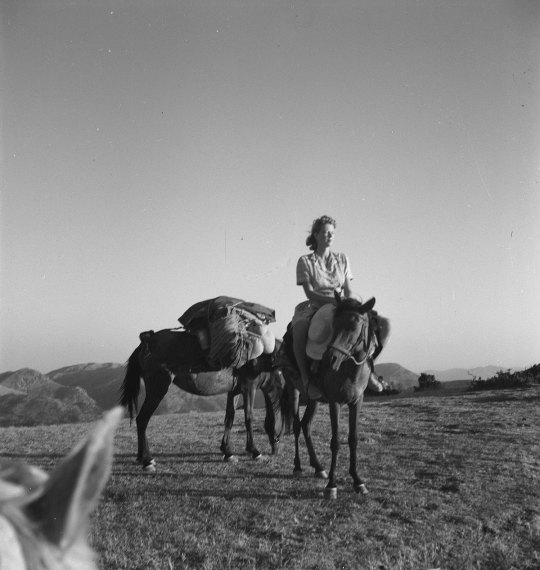
Fiercely independent - a trait that must have enamoured Paddy - they were best imagined as two pillars of a Greek temple, beside one-another but capable of holding up the roof of the world that they had built for themselves through the lens of ancient history and Hellenic culture. Indeed, it was said that they had a special ‘pact of liberty’. It is this unconquerable aura that led poet laureate John Betjeman to declare his love for her (he called her ‘Dotty’ and remarked that her eyes were as large as tennis balls). For Cyril Connolly, the photographer she shadowed, and with whom she had a scandalised affair during her first marriage, she was a “lovely boy-girl” and Laurence Durrell named her the ‘Corn Goddess’ because of her slender figure and short hair. But of all of these worthy candidates, it was the warrior-poet Patrick Leigh Fermor who finally won her heart.
To Joan, who described herself as a ‘lifelong loner’ in her diaries, her companionship with the uncomplicated Paddy was a relief. They had no children, nor did they want any - or so Paddy claimed. But those who knew Joan suspected she did want children but it never came to pass; and so she became a devoted aunt or dotted on other friends’ children. For both of them their dozens of cats gave them the next best thing to paternal satisfaction. Still, her morbid fascination with photographing cemeteries painted a much darker side.
Joan Raynor’s inheritance subsidised his peripatetic life at least until the enormous success of ‘A Time of Gifts’ in the late 1970s, which in turn created a new market for his previous volumes about Greece, ‘Mani’ and ‘Roumeli’.
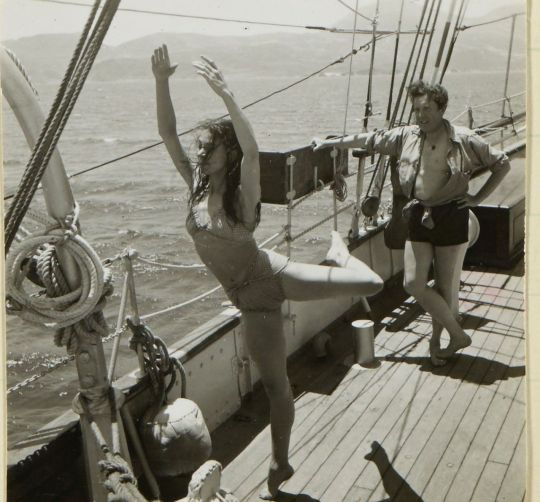
With Joan’s tacit consent, Paddy enjoyed amorous flings, discrete sexual affairs with high society women and sampled the low delights of the brothel. This activity rarely made it into his private letters, but the exceptions could be piquant. Writing in 1958 from Cameroon, where he was on the set of a John Huston movie, he told a (male) friend: “ Errol Flynn and I . . . sally forth into dark lanes of the town together on guilty excursions that remind me rather of old Greek days with you.” In a 1961 letter to the film director John Huston’s wife, Ricki, with whom Leigh Fermor had been having sex with (and would die in a car crash in 1969). “I say,” the passage begins, “what gloomy tidings about the CRABS! Could it be me?” Riffing on pubic lice and their crafty ways, he conjectures that, during a recent romp with an “old pal” in Paris, a force “must have landed” on him “and then lain up, seeing me merely as a stepping stone or a springboard to better things” - to Mrs. Huston, that is. As comic apologies for venereal infection go, the passage is surely a classic.
Like most high flying lives, it was far from blameless. Wounded women were littered in his wake. Some British visitors to Athens were less than impressed by this Englishman who posed as “more Greek than the Greeks”.
Some Greeks shared their disdain. Revisionist historians criticised his role in wartime Crete, and warned their fellow Hellenes that for all his fluency and charm, Leigh Fermor was no latter day Byron. His unoccupied car was blown up outside his Mani house, probably by members of the Greek Communist Party which he had vocally opposed. The accidental fatal shooting of a partisan in Crete led to a long blood feud which made it difficult for Leigh Fermor to re-enter the island until the 1970s, and possibly explains why he chose to settle in the Peloponnese rather than among the hills and harbours of his dreams.
His own books had already eclipsed those incidents, not only among readers of English but also in Greece, where in 2007 the government of his adopted land made him a Commander of the Order of the Phoenix for services to literature.
Travel writers such as the great Jan Morris have described Leigh Fermor as the master of their trade and its greatest exponent in the 20th century.

When ‘A Time of Gifts’ was published in 1977, Frederick Raphael wrote: “One feels he could not cross Oxford Street in less than two volumes; but then what volumes they would be!”
They are not for everyone. Leigh Fermor wrote that written English is a language whose Latinates need pegging down with simple Anglo-Saxonisms, and some feel that he personally could have made more and better use of the mallet. His exuberance is either captivating or florid. It is certainly unique among English prose styles.
Artemis Cooper, his patient and careful biographer wrote that “Paddy had found a way of writing that could deploy a lifetime’s reading and experience, while never losing sight of his ebullient, well-meaning and occasionally clumsy 18-year-old self … this was a wonderful way of disarming his readers, who would then be willing to follow him into the wildest fantasies and digressions”.
Those fantasies and digressions took decades to express. ‘A Time of Gifts’ had arguably been 40 years in the making when it was published in 1977. Its sequel, ‘Between the Woods and the Water’, did not appear until 1986. The third and final volume has been awaited ever since. Following Leigh Fermor’s death, a foot-high manuscript was apparently found on his desk.
Once he knuckled down to it, Leigh Fermor loved playing around with words. He was one of our greatest stylists and he was devoted to producing un-improvable books. But writing did not come easily to him, at least partly because it was something of a distraction from the main event, which was living an un-improvable life of unrepentant gaiety and fun.
For forty odd years, a legion of friends and admirers would beat a path to Paddy and Joan’s door. Artists, poets, royalty and writers came, all taking inspiration from their erudite hosts. A visit was an act of communion, a sharing of ideas and stories.
Leigh Fermor influenced a generation of British travel writers, including Bruce Chatwin, Colin Thubron, Philip Marsden, Nicholas Crane, Rory Stewart, and William Dalrymple. Indeed when Bruce Chatwin died, it was Paddy who scattered Chatwin’s ashes near a church in the mountains in Kardamyli.
When I was there in April 2022, I went to that same church to pay my respects.
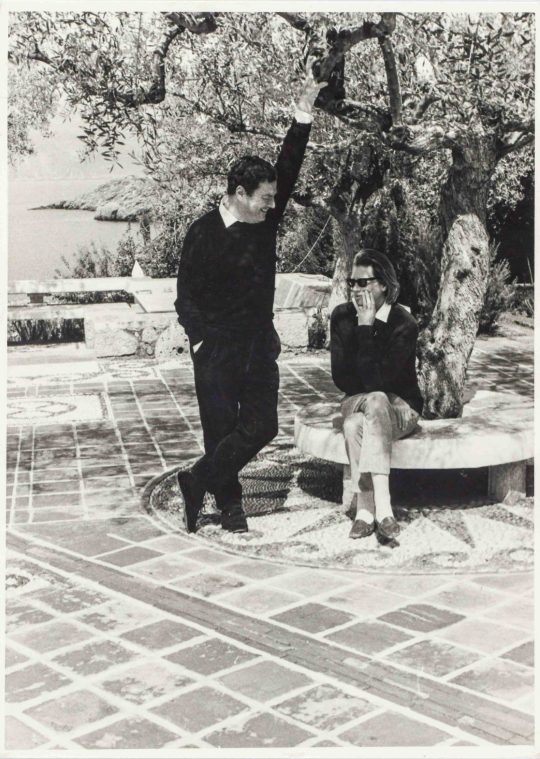
But some of Paddy’s life energy was sucked out of him when Joan died in Kardamyli in June 2003, aged 91. It was related that Joan said to her friend Olivia Stewart, who was visiting: 'I really would like to die but who'd look after Paddy?' Olivia said that she would. A few minutes later, Joan fell, hit her head - and died instantly of a brain haemorrhage. Joan had often quoted Rilke: 'The good marriage is one in which each appoints the other as guardian of his solitude.' Now Paddy Leigh Fermor was all alone.
Leigh Fermor was knighted in 2004, the day of his birthday which he delighted in like a giggling schoolboy. But he missed Joan terribly.
For the last few months of his life Leigh Fermor suffered from a cancerous tumour, and in early June 2011 he underwent a tracheotomy in Greece. As death was close, according to local Greek friends, he expressed a wish to visit England to bid goodbye to his friends, and then return to die in Kardamyli, though it is also stated that he actually wished to die in England and be buried next to his wife, Joan, in Dumbleton, Gloucestershire. He stayed on at Kardamyli until the 9th June 2011, when he left Greece for the last time. He died in England the following day, 10th June 2011, aged 96. It was reported that he had dined in full black tie on the evening of his death. Paddy had style even unto the end.

A Guard of Honour was formed by the Intelligence Corps and a bugler from his former regiment, the Irish Guards, delivered the ‘Last Post’ at Paddy’s funeral. As had been his wish, he was buried beside Joan. On his gravestone in Dumbleton cemetery is an inscription in Greek, a quote from Constantine Cavafy: “In addition, he was that best of all things, Hellenic.”
Although Joan had passed away at the age of ninety-one, after suffering a fall in the Mani. Her body was repatriated to Dumbleton, the place of her birth - ironic that her dream was to be as far as she could possibly go from the rolling humdrum Worcestershire hills. But perhaps she intended to return all along. When Paddy was buried beside her it seemed that the ‘pact of liberty’ that these two lonely souls had forged themselves could be tested in the great elsewhere. Joan was more than his muse (as many of her obituaries were at pains to declare) but his greatest adventure.
To come around full circle from the movie ‘Ill Met By Moonlight’ (1957) that I saw that night in Verbier, my father told me that rather poignantly, General Kreipe, the German commander Leigh Fermor had captured - once an enemy, and later a friend - left behind notes and photographs from across his life. On one of those notes, it was discovered, the following was scribbled from a brief visit to Greece: “Somewhere, amidst all the disarray, was the story of Joan and Paddy, and” it concluded, “…of their lives together.”
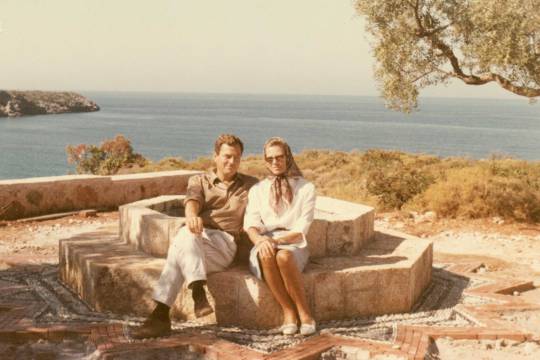
His life with Joan and all that she meant to him was one part of the mosaic of who Paddy Leigh Fermor was. But it’s incomplete.
Paddy didn’t like the idea of a biography, and neither did Joan when she was alive. But friends had persuaded them that unless Paddy appointed someone to write his life, he might find himself the subject of a book whether he liked it or not. In Artemis Cooper they couldn’t have chosen a better writer to chronicle Paddy’s life as a man of action and letters. Cooper, was the daughter of another accomplished diplomat and historian, John Julius Norwich, and grand-daughter of Duff and Diana Cooper. As the wife of the historian Antony Beevor, she became a trusted friend of the Leigh Fermors. Cooper was too good of a historian to let her friendship lead her astray from being a faithful but serious biographer. Knowing this, she was told she could go ahead, but she had to promise not to publish anything until after they were both dead.
Paddy did not like being interviewed, and would keep her questions at bay with a torrent of dazzling conversation. He was the master at deflecting discussions away from himself.
He was also very unwilling to let Cooper see many of his papers, though the refusal always couched in excuses. ‘Oh dear, the Diary…’ It was the only surviving one from his great walk across Europe, and I was aching to read it. ‘Well it’s in constant use, you see, as I plug away at Vol III,’ he would say. Or, ‘My mother’s letters? Ah yes, why not. But it’s too awful, I simply cannot remember where they’ve got to…’ It was quite obvious that he and Joan, while being unfailingly generous, welcoming and hospitable, were determined to reveal as little as possible of their private lives.
While they were more than happy to talk about books, travels, friends, Crete, Greece, the war, anything - they would not tell her any more than they would have told the average journalist. But she persisted and got closer than most. He showed particularly gallantry in not talking about his romantic entanglements. But she soon twigged that anytime he described a woman as ‘an old pal’ it was a sure bet that he had an affair with her.
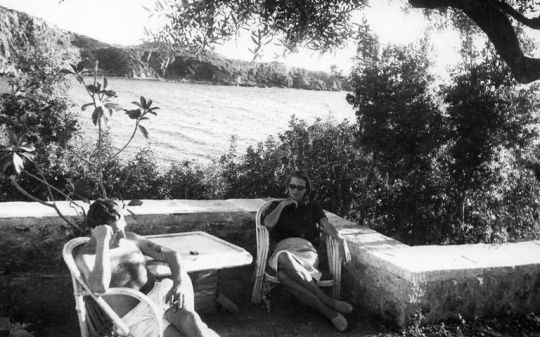
Intriguingly, Paddy liked to claim he was descended from Counts of the Holy Roman Empire, who came to Austria from Sligo. Paddy could recite ‘The Dead at Clomacnoise’ (in translation) and perhaps did so during a handful of flying visits to Ireland in the 1950s and 1960s, partying hard at Luggala House or Lismore Castle, or making friends with Patrick Kavanagh and Sean O’Faolain in Dublin pubs. He once provoked a massive brawl at the Kildare Hunt Ball, and was rescued from a true pounding by Ricki Huston, a beautiful Italian-American dancer, John Huston’s fourth wife and Paddy’s lover not long afterwards.
And yet, a note of caution about Paddy’s Irish roots is sounded by his biographer, Artemis Cooper, who also co-edited ‘The Broken Road’, the final, posthumously published instalment of the trilogy. “I’m not a great believer in his Irish roots,” she said of Leigh Fermor in an interview, “His mother, who was a compulsive fantasist, liked to think that her family was related to the Viscount Taaffes, of Ballymote. Her father was apparently born in County Cork. But she was never what you might call a reliable witness. She was an extraordinary person, though. Imaginative, impulsive, impossible - just the way the Irish are supposed to be, come to think of it. She was also one of those sad women, who grew up at the turn of the last century, who never found an outlet for their talents and energies, nor the right man, come to that. All she had was Paddy, and she didn’t get much of him.”
And I think that’s the point, no one really got much of Paddy Leigh Fermor even as he only gave a crumb of himself to others but still most felt grateful that it was enough to fill one’s belly and still feel overfed by him.
Paddy never tried to get to the bottom of his Irish ancestry, afraid, no doubt, of disturbing the bloom that had grown on history and his past, a recurring trait. “His memory was extraordinary,” Artemis Cooper noted, “but it lay dangerously close to his imagination and it was a very porous border.”
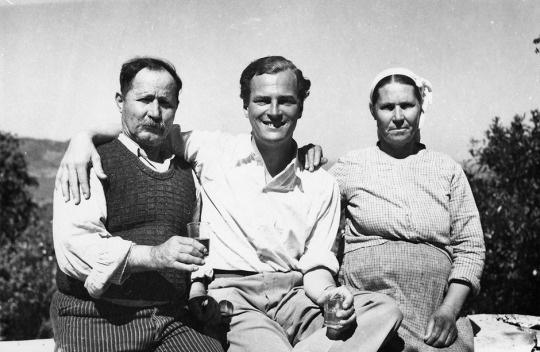
Within the Greek imagination many Greeks saw in Paddy Leigh Fermor as the second coming of Lord Byron. It’s not a bad comparison.
Lord Byron claimed that swimming the Hellespont was his greatest achievement. 174 years or so later, another English writer, Patrick Leigh Fermor - also, like Byron, revered by many Greeks for his part in a war of liberation - repeated the feat. Leigh Fermor, however, was 69 when he did it and continued to do it into his 80s. Byron was a mere 22 years old lad. The Hellespont swim, with its mix of literature, adventure, travel, bravery, eccentricity and romance, is an apt metaphor for Leigh Fermor’s life. Paddy Leigh Fermor was the Byron of his time. Both men had an idealised vision of Greece, were scholars and men of action, could endure harsh conditions, fought for Greek freedom, were recklessly courageous, liked to dress up and displayed a panache that impressed their Greek comrades. Like a good magician it was also a way to misdirect and conceal one’s true self.
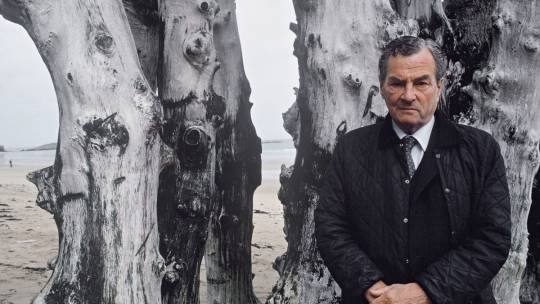
What or who was the true Paddy Leigh Fermor?
Like Byron, Leigh Fermor appeared as a charismatic and assured figure. He was a sightseer, consuming travel, culture, and history for pleasure. He was an aristocrat moving in the social circles of his time. He was a gifted amateur scholar, speculating on literary and historical sources. Leigh Fermor, Byron’s own identity, is subject to textual distortion; it emerges from a piece of occasional prose in his books and is shaped by the claims of correspondence on a peculiarly fluid consciousness.
There is no hard and fast distinction to be drawn here between real and imagined, only a continuity of relative fictions that lie between memory and imagination as his biographer asserted. If there is a will to assert identity here, to disentangle fact and fiction, to give things as they really are and nail down the real Leigh Fermor then it is somewhere between the two. This is where we will find Paddy.
For many his death marked the passing of an extraordinary man: soldier, writer, adventurer, a charmer, a gallant romantic. As a writer he discovered a knack for drawing people out and for stringing history, language, and observation into narrative, and his timing was perfect. Paddy often indulged in florid displays of classical erudition. His learned digressions and serpentine style, his mannered mandarin gestures, even baroque prose, which Lawrence Durrell called truffled and dense with plumage, were influenced by the work of Charles Doughty and T.E. Lawrence. But one can’t compare him. I agree with the acclaimed writer Colin Thurbon who said, “There is, in the end, nobody like him. A famous raconteur and polymath. Generous, life-loving and good-hearted to a fault. Enormously good company, but touched by well-camouflaged insecurities. I would rank him very highly. ‘The finest travel writer of his generation’ is a fair assessment.”
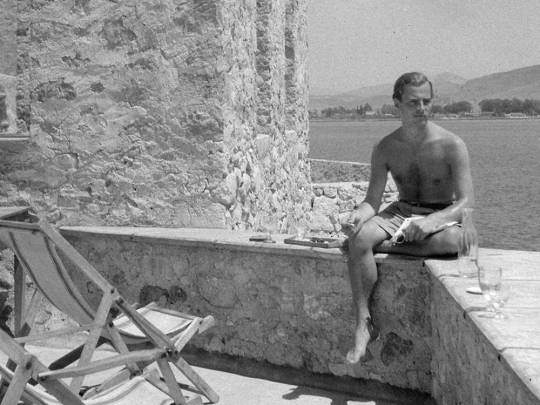
As a child I didn’t really know who Paddy Leigh Fermor was other than this very cheerful and charismatic old man was kind, attentive, and took a boyish delight in everything you were doing. Only later on in adulthood was it clear to that Paddy was not only among the outstanding writers of his time but one of its most remarkable characters, a perfect hybrid of the man of action and the man of letters. Equally comfortable with princes and peasants, in caves or châteaux, he had amassed an enviable rich experience of places and people. “Quite the most enchanting maniac I’ve ever met,” pronounced Lawrence Durrell, and nearly everyone who’d crossed paths with him had, it seemed, come away similarly dazzled.
I am equally dazzled - more smitten in retrospect - for alas they don’t make men like Paddy any more. But every time I dip back into his books I think I discover a little bit more of who Paddy Leigh Fermor was because I find him some where between my memory and my imagination.
#essay#paddy leigh fermor#leigh fermor#joan raynor#joan leigh fermor#greece#crete#second world war#SOE#war#british army#history#general kreipe#stanley moss#literature#author#writer#travel#explorer#wanderlust#travel writing#europe#mani#peloponnese#kardamlyi#lord byron#ill met by moonmight#film#movie#personal
110 notes
·
View notes
Text
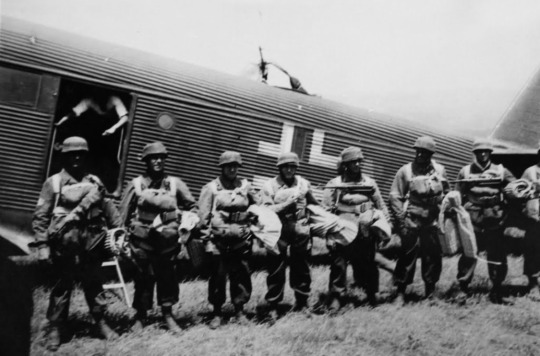
German paratroopers pose for a last photograph as they get ready to embark on Operation Mercury 20 May 1941 Credit : @justforbooks
#world war two#1940s#worldwar2photos#history#ww2#wwii#ww2 history#wwii era#world war 2#ww2history#aviation#luftwaffe#fallschirmjäger#paratroopers#Crete#1941#greece#battle of Crete#operation mercury
120 notes
·
View notes
Text


If there is life after the Earth-life, will you come with me? Even then?
If we're meant to be something, why not together.
Dianthus of Oenoe (also called Dia or very rarely Dianthe) is my main sona / self insert / etc. She's basically me but if i was in Hade game's setting <3 more info below!
( Art credits: Laurel (TH) / 2nd drawing is by me )
She's physically in her 20s and about 5'4. Her father was a human merchant from somewhere in Sub-Saharan Africa, and her mother was Chloris, a nymph-goddess from Etruria. Due to being half nymph Dianthus has some powers over plantlife herself, but they're very weak and mostly useless. Her hair and body will sometimes sprout flowers or even fruit, but it tends to happen randomly, and like any flower they eventually wilt overtime!
She met Theseus while still alive, and aided him in his battle against the Bull of Marathon. Afterwards Theseus returned to Athens, but he intended to return to Dia's home so that he may have her hand in marriage. Unfortunately, however, Theseus was soon sent off to Crete to deal with another bull problem overseas, and Dia had to leave her home to avoid an arranged marriage. After this and up until her death, she became a Maenad, a member of the retinue of Dionysus, and thru him became associated with the Eleusisian mysteries. When she died, her body was transformed into a carnation.
Later, in Elysium, she reunited with King Theseus, and helped him again, this time in the task of bringing Asterius to Elysium!
Within the blessed fields, she works as a librarian.
She's a rather sweet girl for the most part, and tries her best to be kind to others. However... she can also be a bit arrogant and self centered as well. She's very stubborn and headstrong when she needs to be, but also won't hesitate to give up on a task if it proves to be too much- she's very concerned for her own rest and relaxation, after all. When it comes to Theseus and Asterius, she often has to remind them to take breaks as well!
Silly funfacts:
~ She writes gay fanfiction of heroes even more ancient than those of greece. ask her about her gilgamesh/enkidu yaoi collection (don't actually ask her she'll get embarassed)
~ within a plaza of elysium, there's a board within the plaza where shades can come by and pin things they've written. one user of this board is only known as "championsgirl01" and writes some very passionate posts... most of them in defense of the king himself.
~ Her favourite flower is actually the sunflower, but she also loves pink roses and carnations, her namesake.
~ She collects merch of the champions, and is the vice president of their fanclub. She also watches every match! ...In reality, though, she really doesn't care that much about the sportmanship thing. She just likes watching sweaty buff guys battling it out.
~ Friends with Patroclus, Achilles, Dusa, and surprisingly, Alecto. Has a weird frenemies thing with Zagreus. Co-workers with Hypnos but he's always asking what Asterius is up to which makes her look at him with daggers in her eyes </3
157 notes
·
View notes
Photo
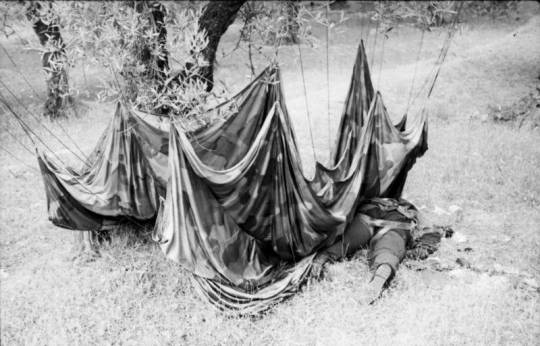
A dead German paratrooper during the Battle of Crete, May 1941
21 notes
·
View notes
Text
THIS DAY IN GAY HISTORY
based on: The White Crane Institute's 'Gay Wisdom', Gay Birthdays, Gay For Today, Famous GLBT, glbt-Gay Encylopedia, Today in Gay History, Wikipedia, and more … February 14




c.2000 B.C. - 1200 B.C. – Ganymede, a beuatiful shepherd boy, was abducted by Zeus , king of the Gods, from Mount Ida, near Troy. Ganymede had been tending sheep, a rustic or humble pursuit characteristic of a hero's boyhood before his privileged status is revealed. Zeus either sent an eagle or turned himself to an eagle to transport the youth to Mount Olympus.
In the Iliad, Zeus is said to have compensated Ganymede's father Tros by the gift of fine horses, "the same that carry the immortals", delivered by the messenger god Hermes.
In Olympus, Zeus granted Ganymede eternal youth and immortality and the office of cupbearer to the gods, supplanting Hebe. All the gods were filled with joy to see the youth, except for Hera, Zeus's consort, who regarded Ganymede as a rival for her husband's affection. Zeus later put Ganymede in the sky as the constellation Aquarius.
Plato accounts for the pederastic aspect of the myth by attributing its origin to Crete, where the social custom of paiderastía was supposed to have originated. He has Socrates deny that Ganymede was the "catamite" of Zeus, and say the god loved him non-sexually for his psychē, "mind" or "soul," giving the etymology of his name as ganu-, "taking pleasure," and mēd-, "mind." Ganymede, he points out, was the only one of Zeus's lovers who was granted immortality.
In poetry, Ganymede became a symbol for the beautiful young male who attracted homosexual desire and love.


c.2000 B.C. - 1200 B.C. – In Classical myth, Hyacinth was a beautiful boy and lover of the god Apollo, though he was also admired by the West Wind, Zephyr. Apollo and Hyacinth took turns throwing the discus one day. Hyacinth ran to catch it to impress Apollo, was struck by the discus as it fell to the ground, and died.
In one telling of the tale, the wind god Zephyrus was responsible for the death of Hyacinth. His beauty caused a feud between Zephyrus and Apollo. Jealous that Hyacinth preferred the radiant archery god Apollo, Zephyrus blew Apollo's discus off course, so as to injure and kill Hyacinth.
When he died, Apollo didn't allow Hades to claim the boy; rather, he made a flower, the hyacinth, from his spilled blood. It's a very moving story that has been the basis of many works of art over the centuries.

According to Ovid's account, the tears of Apollo stained the newly formed flower's petals with the words ai ai, the Greek cry of grief. The flower of the mythological Hyacinth has been identified with a number of plants other than the true hyacinth, such as the iris.


c.1200 B.C. – In Greek mythology, Patroclus, or Patroklos, was the son of Menoetius, was Achilles' beloved comrade and brother-in-arms.
In his youth, Patroclus accidentally killed his friend, Clysonymus, during an argument over a game of dice. His father fled with Patroclus into exile to evade revenge, and they took shelter at the palace of their kinsman King Peleus of Phthia. There Patroclus apparently first met Peleus' son Achilles. Peleus sent the boys to live in the wilderness and be raised by Chiron, the cave-dwelling wise King of the Centaurs.
In a post-Homeric version, he is listed among the unsuccessful suitors of Helen of Sparta, all of whom took a solemn oath to defend the chosen husband against whoever should quarrel with him, which brought both the young men into the battle against Troy.
In the Iliad, the two heroes have a deep and meaningful friendship. Achilles is tender towards Patroclus, while he is callous and arrogant towards others. In Athens during the 5th century BC, the relationship was often viewed in light of the Greek custom of paiderasteia (man-boy love).
When the tide of war turned away from the Grreks, and the Trojans threatened their ships, Patroclus convinced Achilles to let him don Achilles' armor and lead the their troops into combat. In his lust for combat, Patroclus pursued the Trojans all the way back to the gates of Troy, defying Achilles' order to break off combat once the ships were saved. Patroclus was stunned by Apollo, then finished off by Hector, hero of the Trojans.
After retrieving Patroclus' body, Achilles returned to battle and avenged his companion's death by killing Hector. Achilles then desecrated Hector's body by dragging it behind his chariot instead of allowing the Trojans to honorably dispose of it by burning it. Achilles' grief was great and for some time, he refused to dispose of Patroclus' body; but he was persuaded to do so by an apparition of Patroclus, who told Achilles he could not enter Hades without a proper cremation. Achilles sheared off his hair, and sacrificed horses, dogs, and twelve Trojan captives before placing his lover's body on the funeral pyre.
While the lIiad never explicitly stated as such, in later Greek writings, such as Plato's Symposium, the relationship between Patroclus and Achilles is held up as a model of romantic love. In the 5th and 4th centuries, the relationship with Patroclus was portrayed as same-sex love in the works of Aeschylus, Plato and Aeschines.
From the times of Classical Greece, and especially in Hellenism, to the time of the Romans, the relationship between Achilles and Patroclus was presented as loving and pederastic, although these roles are anachronistic for the Iliad. Achilles is the most dominant, and among the warriors in the Trojan War he has the most fame; Patroclus performs duties such as cooking, feeding and grooming the horses, and nursing yet is older than Achilles. Both also sleep with women.
In the 5th century BC, in Aeschylus' lost tragedy the Myrmidons, Aeschylus regarded the relationship as a sexual one and assigned Achilles the role of erastes(older lover or protector), since he avenged his lover's death even though the gods told him it would cost him his own life), and Patroclus the role of eromenos (boy lover). He tells of Achilles visiting Patroclus' dead body and criticizing him for letting himself be killed. In a surviving fragment of the play, Achilles speaks of their "devout union of the thighs".
Plato presented Achilles and Patroclus as lovers in the Symposium, written around 385 BC. The speaker Phaedrus holds the two up as an example of divinely approved lovers. He also argues that Aeschylus erred in saying that Achilles was the erastes, "for he excelled in beauty not Patroclus alone but assuredly all the other heroes, being still beardless and, moreover, much the younger, by Homer's account."

c.1040 B.C. – Jonathan, Son of Saul, born; No one knows exactly when the biblical Jonathan was born, of course. But let's just assign this date to this sweet young man, whose presence in "Holy Writ" has always been an embarrassment to fundamentalist preachers everywhere.
The story of David and Jonathan is well known from the Hebrew bible. It is not explicitly stated that there was a sexual relationship between them but the passionate language is certainly that of lovers.
"And it came to pass, when he had made an end of speaking unto Saul, that the soulof Jonathan was knit with the soul of David, and Jonathan loved him as his own soul. And Saul took him that day, and would let him go no more home to his father's house. Then Jonathan and David made a covenant, because he loved him as his own soul. "
The love of Jonathan for David, a love so deep that he foreswore his father out of loyalty to his beloved, has provided literature with both a powerful trope for male love and one of the most oft-quoted lines of Scripture, spoken by David at the death of his friend: "My brother, Jonathan, thy love to me was wonderful, passing the love of women" (2 Samuel 1:26).

a modern view of David and Jonathan


c.940 B.C. – Asher was a son of Solomon, Caleh a shepherd. By some accounts these were the two lovers in the frankly erotic love poem, the 'Song of Songs', widely used as a metaphor for the love between God and humanity. Usually presented as conventional heterosexual love, there is increasing recognition that the lovers were probably both men.
A translation by Dr Paul R Johnson directly from early texts includes the frankly homoerotic:
"How delightful you are Caleh,
My lover-man, my other half.
Your pleasing masculine love is better than wine.
The smell of your body is better than perfume.
Your moustache is waxed with honeycomb.
Honey and milk are under your tongue.
The scent of your clothing is like the smell of Lebanon."
A review of this book, posted on the Wild Reed, notes that:
"It gets to the heart of the question of whether the Hebrews and early Christians were fundamentally homophobic, or whether, as John Boswell has maintained, homophobia was a later addition. Johnson has consulted with many Hebrew scholars, who reluctantly concede the validity of his revolutionary word-for-word translation."

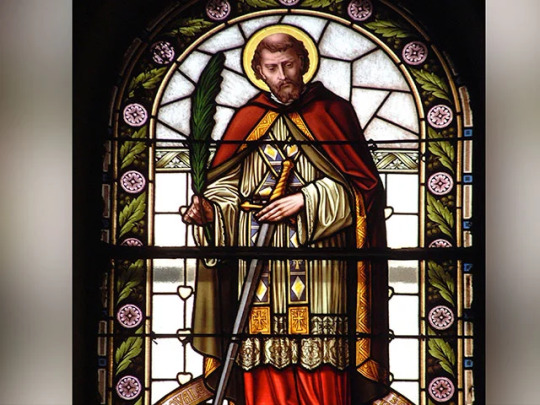
270 – St. Valentine. No no no...Don't jump to any conclusions. St. Valentine was not Gay, but neither did he have anything to do with the holiday for lovers that bears his name. That St. Valentine, one of the more boring Christian martyrs, is the patron saint of lovers is a mere fluke. You see, the Norman word galatin, meaning a lover, was often mispronounced valentin, and through a natural confusion of names, St. Valentine became associated with love.




Bishop Peter Ball with Prince Charles (now sick King Charles III)
1932 – Peter Ball (d.2019) was a British bishop in the Church of England and convicted sex offender. In 1960 he and his twin brother (Michael Ball) established a monastic community, the Community of the Glorious Ascension, through which Ball came into contact with many boys and young men.
He was the suffragan Bishop of Lewes from 1977 to 1992 and the diocesan Bishop of Gloucester from 1992 to 1993, when he resigned after being cautioned for sexual abuse; he continued to officiate at several churches after that.
In October 2015, Ball was sentenced to 32 months' imprisonment for misconduct in public office and indecent assault after admitting the abuse of 18 young men over a period of 15 years from 1977 to 1992. Further charges of indecently assaulting two boys, aged 13 and 15, were allowed to lie on file in a contentious decision by the Crown Prosecution Service (CPS). He was released on licence in February 2017 and died two years later.
Peter Ball was the first Anglican bishop to be sent to prison since 1688, when King James II committed seven bishops to the Tower for their opposition to his Declaration of Indulgence.

1962 – Kevyn Aucoin, the American cosmetologist born (d.2002); a make-up artist and photographer who was well known for catering to the laywoman's need to feel beautiful. He worked with hundreds of A-list celebrities like Cher, Janet Jackson, Tina Turner, Gwyneth Paltrow, Courtney Love and Vanessa Williams. He became a highly in-demand makeup artist, often acquiring $10,000 per session for photo shoots or award shows. As a published author (The Art of Makeup, Making Faces, and Face Forward), he was fond of taking celebrities (and various other men & women, including his mother) and using makeup and costume (and sometimes prosthetics) to make them look like other celebrities, or like other people entirely. He transformed Tori Amos into Mary Queen of Scots, Liza Minnelli into Marilyn Monroe, Christina Ricci into Édith Piaf, Hilary Swank into Raquel Welch, Winona Ryder into Elizabeth Taylor, and Martha Stewart into Veronica Lake, among others.
Aucoin was interested in makeup from the time he was a child,and frequently did his sisters' makeup and photographed the results with a Polaroid camera—something he'd do throughout his career. Afraid to buy makeup, he would shoplift it. The guilt of stealing and fear of getting caught made him stop.
He realized he was gay at age six, and was frequently bullied at school. His parents were initially in denial of their son's emerging sexual orientation; his mother later said, "I didn't think Kevyn was a sissy; I just thought he was a gentle child." In one instance, he had a teacher spank his bare buttocks in class, which Aucoin later regarded as sexual abuse. The bullying continued in high school, and he dropped out after being chased by several classmates in a truck. He enrolled in beauty school and had hoped to learn more about applying makeup, but ended up teaching the class instead.
Aucoin lived with his partner, Jeremy Antunes, whom he married in an unofficial ceremony in Hawaii in 2000 and thereafter referred to as his husband. He had also previously been romantically involved with Eric Sakas, who, after their breakup, remained close friends with him and became president and creative director of Kevyn Aucoin Beauty.
In October 2001, just one month after launching his own cosmetics line, Aucoin was diagnosed with a rare pituitary tumour. He had been suffering from acromegaly resulting from the tumour for much of his life, but it had gone undiagnosed. He died in May 2002 of kidney and liver failure due to Tylenol toxicity, due to an addiction to prescription painkillers used to treat the extreme pain from his condition. A musical homage, called Taxi Ride, was written for him by longtime friend Tori Amos.



Sucsy (L) with husband Sgourakis
1973 – Michael Sucsy is a Golden Globe and Emmy Award winning film director, screenwriter, and producer. He is best known for creating the HBO film Grey Gardens.
Sucsy was raised in Connecticut and New York City and is a graduate of Deerfield Academy, Georgetown University's Edmund A. Walsh School of Foreign Service (where he earned a degree in International Relations, Law & Organization), and the Art Center College of Design in Pasadena, CA (Masters in Fine Arts.)
Sucsy segued from studying international relations to film production via the advertising industry, where he worked for the award-winning agency Cliff Freeman & Partners on the first-ever Staples t.v. ads. Sucsy then pursued work as a production assistant, an art department coordinator, a production secretary, and an assistant director on feature films, commercials, and music videos in Washington DC, New York City, and Los Angeles.
In 2003, Sucsy was inspired to write and direct a narrative feature film about the famous true story of Jackie O's eccentric relatives "Big Edie" Bouvier Beale and "Little Edie" Bouvier Beale called Grey Gardens after viewing the well-known documentary of the same name. The day after he first watched the documentary, Sucsy embarked on what was to become a six-year process to get Grey Gardens made. He used primary sources including Little Edie's personal correspondence, private journals, and poetry as well as interviews with family members and friends as the basis of his original script which traced the Beales' tragic descent from riches to rags over some forty years. With Drew Barrymore and Jessica Lange attached to star as the reclusive mother-daughter duo, the project made its way to HBO who, in 2006, announced that Grey Gardens was moving into production with Sucsy as its director. Principal photography on Grey Gardens began in October 2007, and it debuted on HBO in April 2009 to great acclaim from critics and audiences, both new and old to the Grey Gardens phenomenon.
Sucsy became engaged to his boyfriend, interior designer Demitri Sgourakis, on February 14, 2012, Sucsy's 39th birthday. They were married on August 15, 2015, aboard the Midnight Rambler, a sailboat, off the coast of Montauk, N.Y.

1984 – Elton John marries a woman having earlier said he was bi.

2010 – On this date the Mexican newspaper La Jornada reported that different LGBT rights organizations from Jalisco, Colima and Guanajuato marched down the streets of Guadalajara to demand equal partnership rights. The group, mostly made up of Lesbian and Gay members from different regional university student groups, carried signs and expressed a desire for having similar rights granted to Gays and Lesbians in Mexico City. The group gathered outside the University of Guadalajara and made their way to the city's main plaza where they staged a kiss-in as the shadow of the city's Metropolitan Cathedral fell on them.
The scene outside the Cathedral gave a better sense of how large the march was, an estimated crowd of 350. In addition to the kiss-in, eleven Gay and Lesbian couples also participated in a symbolic wedding ceremony. There were reports of homophobic insults and obscenities being hurled at marchers even as organizers expressed relief that there were no outbursts of violence.
As in Argentina, marriage equality is a red-hot topic in Mexico ever since the Mexico City legislature passed a bill allowing same-sex couples to marry in Mexico's capital city. The measure, which also explicitly would allow same-sex couples to adopt, has run into vehement opposition from right wing politicians and religious leaders - and will also be heading to the country's Supreme Court for review later in the year.


Today's Gay Wisdom
From the King James Version:
1 Samuel 18
1 And it came to pass, when he had made an end of speaking unto Saul, that the soul of Jonathan was knit with the soul of David, and Jonathan loved him as his own soul.
2 Samuel 1
17 And David lamented with this lamentation over Saul and over Jonathan his son ....
19 The beauty of Israel is slain upon thy high places: how are the mighty fallen!
20 Tell it not in Gath, publish it not in the streets of Askelon; lest the daughters of the Philistines rejoice, lest the daughters of the uncircumcised triumph.
21 Ye mountains of Gilboa, let there be no dew, neither let there be rain, upon you, nor fields of offerings: for there the shield of the mighty is vilely cast away, the shield of Saul, as though he had not been anointed with oil.
22 From the blood of the slain, from the fat of the mighty, the bow of Jonathan turned not back, and the sword of Saul returned not empty.
23 Saul and Jonathan were lovely and pleasant in their lives, and in their death they were not divided: they were swifter than eagles, they were stronger than lions.
24 Ye daughters of Israel, weep over Saul, who clothed you in scarlet, with other delights, who put on ornaments of gold upon your apparel.
25 How are the mighty fallen in the midst of the battle! O Jonathan, thou wast slain in thine high places.
26 I am distressed for thee, my brother Jonathan: very pleasant hast thou been unto me: thy love to me was wonderful, passing the love of women.
27 How are the mighty fallen, and the weapons of war perished!



30 notes
·
View notes
Text
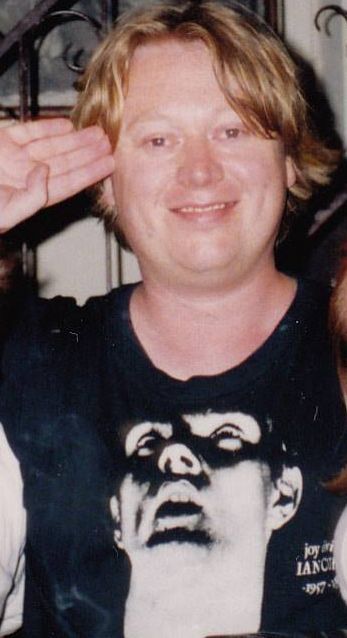
The late Adrian Borland, genius frontman of The Sound, in an Ian Curtis t-shirt while on holiday in Crete, Greece, back in 1992, a few years after the disbandment of The Sound.
Looking at this photo, one can't help but think of the tragic end which connects those two, apart from the fact they were both the rare kind of talent you only get a few times in each generation and that The Sound seem to take up where Joy Division left off.
faroutmagazine.co.uk/ "…Borland continued to release music in a solo career over the course of the ’90s with limited success, all the while battling with his depression, hospitalised on several occasions for psychiatric care. In 1999, unable to overcome his mental condition, Borland committed suicide by jumping in front of a moving express train near Wimbledon station in London. One can’t help but draw a final parallel between Adrian Borland and Ian Curtis of Joy Division, who more famously met an end by his own hand in 1980…
…As the past has told us, the most creative minds among us are also the most troubled. The art of many of these troubled minds will naturally connect most with those who have struggled with similar internal battles…"
(via)
24 notes
·
View notes